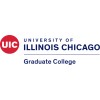
Effect of Raspberry on Gut Microbiota and Metabolic Syndrome
Gut MicrobiotaMetabolic SyndromeThere is growing evidence that nutritional intervention with dietary polyphenols can positively modulate the gut microbiota to improve cardiometabolic health. Whether the beneficial effects of raspberry on obesity and the metabolic syndrome can be linked to their potential impact on the gut microbiota and intestinal integrity remains speculative at this time. Moreover, the mechanisms of action underlying health benefits associated to raspberry consumption are still unknown. The investigators are thus proposing to combine the study of metagenomics, transcriptomics and metabolomics to test whether a prebiotic activity of raspberry can play a role in the prevention of obesity-linked metabolic syndrome in a clinical setting.

Double-Blind Randomized Placebo-Controlled Trial of a Proprietary Full Hemp Flower Formulation for...
Post-acute COVID-19 SyndromeThis is a double-blind, randomized, placebo-controlled single-center clinical trial to explore the safety and efficacy of a full cannabis flower formulation, rich in cannabinoids and terpenes formulation, Xltran Plus™ and Xltran™, both compared to placebo for the treatment of Long COVID patients with prolonged symptoms caused by COVID-19.

Pre-hospital Rule-out of Acute Coronary Syndrome
Acute Coronary SyndromePatients with chest pain suspected for non ST-segment elevation acute coronary syndrome (NSTE-ACS) are routinely transferred to the emergency department (ED). A point-of-care (POC) troponin measurement might enable ambulance paramedics to identify low-risk patients in whom ED evaluation is not necessary. The ARTICA trial aims to assess the healthcare cost reduction and safety of a pre-hospital rule-out strategy using a single POC troponin measurement.

TIRCON International NBIA Registry
Neurodegeneration With Brain Iron Accumulation (NBIA)Pantothenate Kinase-associated Neurodegeneration (PKAN)9 moreTIRCON-reg aims to continue the provision of a global registry and natural history study for NBIA disorders harmonize and cover existing national and single site registries enable participation of countries and single sites that so far have no access to an NBIA registry join forces in order to recruit sufficient numbers of patients define the natural history of NBIA disorders define the most appropriate outcome measures inform the design and facilitate the conduction of clinical trials

Living With Marfans and Your Aorta: Surgical Outcomes Study
Marfan SyndromeMarfan Syndrome Cardiovascular ManifestationsMarfan Syndrome (MFS) is a genetic disease affecting the eyes, skeleton, heart and arteries. Despite MFS affecting multiple organ systems, cardiovascular manifestations are the most serious and life threatening. Approximately 80% of adult MFS patients will have a dilated aortic root by age 40 years with aortic aneurysm and dissection the leading causes of morbidity and mortality. Living with a diagnosis of Marfan Syndrome, including undergoing and recovering from heart surgery, affects patients' mental health, well-being and quality of life in ways that are not well understood. This study will address the current knowledge gaps in this area and will provide the information needed to design interventions to help improve the MFS patients' mental health, well-being and quality of life after heart surgery. The study will include adult MFS patients who are undergoing aorto-vascular surgery. The overall aim of the study is to explore the psychosocial and health-related quality of life (HRQoL) effects of the surgical interventions for aorto-vascular manifestations of MFS in 3 large UK cardiac centres. To achieve this, the researchers will ask the potential participants, after obtaining informed consent, to complete a series of accepted / validated questionnaires to measure the health-related quality of life (SF-36 and EQ5D questionnaire) and psychosocial factors such as depression (CES-D questionnaire), fatigue (Fatigue Severity Scale), stigma (Perceived Stigma Questionnaire), self-esteem (Rosenberg Self-esteem Scale), pain and illness perception (Illness Perception Questionnaire). Participants will be asked to complete the questionnaires before surgery and at various time points after surgery (at 6 weeks after hospital discharge and at 6 and 12 months after surgery). The research team will also collect in-hospital post-operative morbidity burden following aorto-vascular surgery using cardiac post-operative morbidity score (C-POMS) tool from the patients and clinical records. The association of C-POMS with psychosocial and HRQoL outcomes will also be examined.

Interplay Between Immune and Metabolic Programs in Myelodysplastic Syndromes
Myelodysplastic SyndromesMyelodysplastic syndromes (MDS) are a pre-leukemic condition with an extremely poor prognosis despite current treatments that justify new therapeutic approaches. Various studies have described the potential involvement of both immune compartment and cellular metabolism in the pathophysiology of MDS. The aim of this study is to determine the specific immune and metabolic profiles of the different classes of MDS and to identify predictive markers of progression/survival/response to therapy.

New Procedures in Treating Patients With Obstructive Sleep Apnea Syndrome
Obstructive Sleep Apnea SyndromeDrug-induced sleep endoscopy (DISE) used as diagnostic tool but not yet as a therapeutic procedures to manage the upper airway of snorers and obstructive sleep apnea patients in conditions that mimic natural sleep, there are many aspects that need to be standardized in order to obtain reliable and reproducible information result in cryotherapy at sites of vibration as origin of snoring and site of collapse.

Multicentric, Randomized Study to Assess Safety and Efficacy of Centhaquine in COVID-19 Patients...
COVID-19 Acute Respiratory Distress SyndromeSevere acute respiratory syndrome coronavirus 2 (SARS-CoV-2) is a novel coronavirus causing coronavirus disease 2019 (COVID-19), which has been a global pandemic since March 2020. According to WHO, more than 289 million cases have been confirmed worldwide, with just over 5.4 million reported deaths as of January 2022. SARS-CoV-2 variants continue to emerge, with the omicron variant causing the increased surge in cases. Currently, Johns Hopkins University of Medicine reports a case fatality rate of 1.5% for the United States. COVID-19 infections may be asymptomatic in some cases, while most cases cause mild to moderate illness with respiratory and flu-like symptoms. However, a significant number of COVID-19 cases develop severe life-threatening illness involving severe pneumonia and acute respiratory distress syndrome (ARDS), requiring admission to the intensive care unit (ICU) Although there have been breakthroughs in the treatment for COVID-19, most of these are directed at mild-to-moderate disease rather than patients with severe disease on mechanical ventilators. There is still a need for novel and effective treatment options in severe COVID-19 illness with continued vaccine hesitancy, decreased social distancing, and new emerging variants. Centhaquine is a first-in-class resuscitative agent for the hypovolemic shock that is approved for marketing in India. Centhaquine has been found to be an effective resuscitative agent in rat, rabbit, and swine models of hemorrhagic shock. Its safety and tolerability have been demonstrated in a human phase I study in 25 subjects (CTRI/2014/06/004647). Clinical phase II (CTRI/2017/03/008184) and phase III (CTRI/2019/01/017196) results indicate that centhaquine is a novel first-in-class, highly effective resuscitative agent for hypovolemic shock. Centhaquine provided hemodynamic stability and significantly improved acute respiratory distress syndrome (ARDS) and multiple organ dysfunction score (MODS) in clinical trials conducted in India. A total of 155 patients with hypovolemic shock have been studied (combined phase II and III). Centhaquine is safe and reduced the mortality from 10.71% in patients receiving standard treatment to 2.20% in patients that received centhaquine (odds ratio 5.340; 95% CI 1.270-26.50; P=0.0271). In a phase 3 study of hypovolemic shock, ARDS and MODS were secondary endpoints, and centhaquine reduced both with a significant p-value.

Biomarkers in the Diagnosis of Acute Compartment Syndrome
Acute Compartment SyndromeTibia FractureThis prospective multinational, multicentre cohort study aims to investigate the hypothesis that biomarkers of muscle cell damage can predict acute compartment syndrome in patients with tibial fractures.

Longitudinal Studies to Identify Biomarkers for Sturge-Weber Syndrome
Sturge-Weber SyndromeIndividuals with Sturge-Weber Syndrome (SWS) sometimes have brain involvement which can result in seizures, stroke-like episodes and neurologic deficits. The purpose of this study is to integrate longitudinal clinical data, radiological data, and blood biomarkers of Sturge-Weber syndrome patients. The research aims are: To integrate longitudinal clinical data, radiological data, and blood biomarkers of Sturge-Weber syndrome patients. Identify plasma and imaging biomarkers sensitive to exacerbation of clinical symptoms including seizures, headaches, or stroke-like episodes. For enrolled patients who present with severe neurological symptoms screen blood samples for inflammatory changes. The target enrollment for this study is about 250 individuals diagnosed with Sturge-Weber Syndrome. The goal of this study is to understand more about Sturge-Weber Syndrome, the possible treatments for this disease, and identify targets for clinical trials. Those participating in the database will be asked to consent to blood draws.
